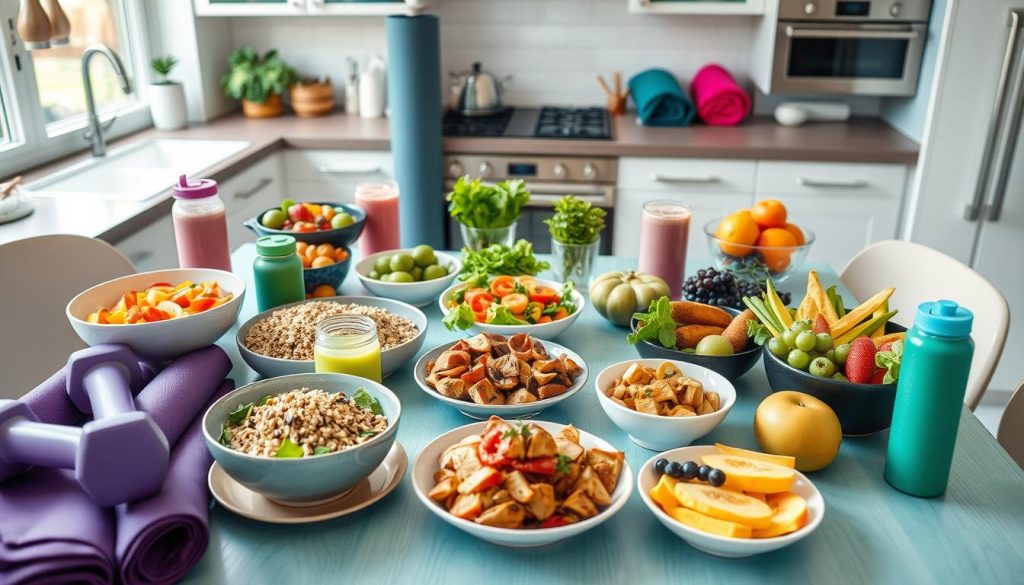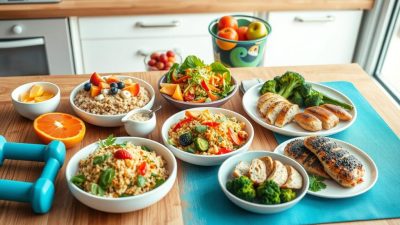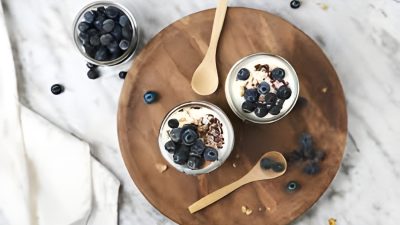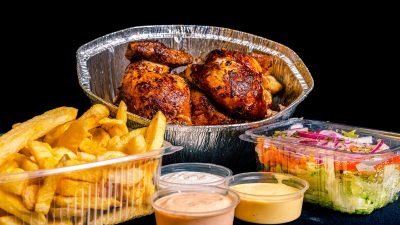Jillian Michaels once said, “Fitness is not about being better than someone else. It’s about being better than you used to be.” Starting your fitness journey with the right nutrition is key. A workout meal plan for women should match your needs for the best results.
With the right nutrition, you can boost your energy and improve your workouts. This article will help you create a nutrition plan that fits you. You’ll learn about nutrition and performance, and how to prepare meals for fitness.
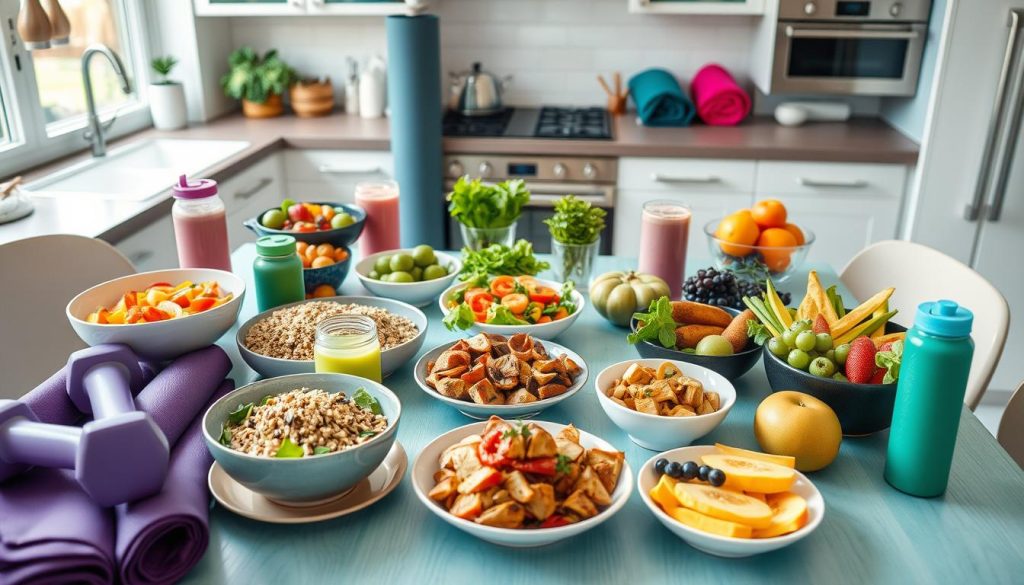
Key Takeaways
- Understand the importance of a tailored workout meal plan for women.
- Identify your personal fitness goals and journaling methods.
- Learn the role of macronutrients and incorporate micronutrients.
- Explore the best foods for female workouts and those to avoid.
- Discover effective meal prep strategies for a busy lifestyle.
- Recognize the significance of proper meal timing before and after workouts.
Understanding the Importance of a Workout Meal Plan
Creating a workout meal plan is key to reaching your fitness goals. The right food acts as workout fuel, helping you do your best during workouts. Without good food, you might feel tired, do less well, and take longer to recover.
How Nutrition Fuels Your Fitness
Nutrition affects your energy and how well you perform. Eating foods full of nutrients gives you the energy to get through tough workouts. Eating healthy carbs, proteins, and fats keeps your energy up and helps your muscles heal.
Good meal planning tips help you eat the right foods at the right times. This boosts your workouts.
The Connection Between Nutrition and Performance
Knowing how nutrition for fitness performance and workout efficiency are linked is crucial. A balanced diet boosts both physical and mental strength. Foods packed with vitamins and minerals help you recover faster and perform better.
Tracking what you eat helps you find what’s best for your body. It keeps you motivated to hit your fitness goals.
Assessing Your Fitness Goals
Understanding your fitness goals is key to reaching your health dreams. Knowing what you want, like losing weight or getting stronger, helps you plan better.
Identifying Your Workout Types
There are many workout types for different goals. Women often choose:
- Cardio: It’s great for heart health and burning calories.
- Strength Training: It builds muscle and boosts metabolism.
- Flexibility and Balance: It makes movements smoother and lowers injury risk.
Knowing your main workouts affects what you eat. It makes sure your body gets the right nutrients.
Setting Realistic Nutrition Goals
It’s important to match your diet with your fitness goals. Set goals you can reach, like:
- Eating a certain number of fruits and veggies each day.
- Adding protein to every meal.
- Slowly cutting down on sweets and fats.
These goals help you stick to a healthy diet. Small steps lead to lasting changes.
Creating a Balanced Meal Framework
Creating a balanced meal plan is key for a good workout routine. Knowing about macronutrients and adding important micronutrients for women is the base of a healthy diet. This diet boosts energy, helps muscles recover, and keeps you healthy.
The Role of Macronutrients
Macronutrients are carbs, proteins, and fats. Each one has a special job in a balanced diet. Carbs are the main energy source, powering your workouts and daily life.
Complex carbs, like whole grains, give you steady energy and keep blood sugar stable. Proteins help fix and grow muscles. You can get protein from lean meats, fish, dairy, and plant-based foods like beans and lentils.
Fats, especially healthy fats in avocados, nuts, and olive oil, are good for hormone production and nutrient absorption.
Incorporating Micronutrients for Optimal Health
Micronutrients, like vitamins and minerals, are vital for staying healthy, especially for active women. They support immune health and muscle function.
Eating a variety of colorful fruits and vegetables gives you a wide range of micronutrients. Leafy greens, berries, and citrus fruits are great for vitamins. Nuts, seeds, and legumes add important minerals to your diet.
Here’s a table to show the balance of macronutrients and micronutrients:
| Macronutrient | Sources | Functions |
|---|---|---|
| Carbohydrates | Whole grains, fruits, vegetables | Energy production, fueling workouts |
| Protein | Lean meats, fish, dairy, legumes | Muscle repair, growth, hormone production |
| Fats | Avocados, nuts, olive oil | Nutrient absorption, hormone production |
Choosing the Right Foods
Fueling your workouts with the right nutrition is key to getting the best results. Knowing the best foods for female workouts helps you choose wisely. This supports your performance and health. We’ll look at nutritious foods that boost your fitness journey.
Best Foods for Female Workouts
Choose foods that give you lasting energy and help with recovery. Here are some healthy foods for workouts to add to your diet:
- Lean Proteins: Chicken breast, turkey, fish, tofu, and legumes help in muscle repair and growth.
- Whole Grains: Quinoa, brown rice, and oats offer sustained energy levels, making them ideal for pre-workout meals.
- Fruits: Bananas, berries, and apples provide natural sugars and essential vitamins, perfect for quick energy boosts.
- Healthy Fats: Avocados, nuts, and olive oil support overall health and aid in nutrient absorption.
Foods to Avoid for Better Performance
Some foods can help your fitness, while others can hold you back. Avoiding certain items can improve your performance:
- Sugary Snacks: Candies and pastries may lead to energy crashes during workouts.
- Processed Foods: These often contain unhealthy fats and additives that detract from overall nutrition.
- High-Sugar Drinks: Soda and sugary sports drinks can spike insulin levels and lead to dehydration.
Workout Meal Plan for Women
Creating a good workout meal plan is all about knowing your schedule and fitness goals. It’s important to plan your meals well to reach your fitness targets. Eating at the right times and in the right amounts keeps your energy up all day.
Structuring Your Meal Plan
Start by making a meal plan that fits your life. A good plan has three main meals and two snacks. This keeps your energy steady without taking over your day. Make sure to include proteins, carbs, and fats to fuel your body for workouts and recovery. Here’s a basic plan:
- Breakfast: Try Greek yogurt with berries and granola for a protein-packed start.
- Lunch: Choose lean proteins like grilled chicken on a veggie salad.
- Snack: A fruit with nuts gives a quick energy lift.
- Dinner: Go for a meal with fish, quinoa, and steamed veggies for balance.
- Post-Workout Snack: A protein shake or smoothie helps with recovery.
Adapting Your Plan to Your Schedule
Life gets busy, so making meals easy to prepare is key. Spend a few hours each weekend cooking and portioning meals. This saves time and keeps you eating healthy when you’re hungry. Here are some tips to adjust your plan:
- Batch cook grains and proteins to speed up meal prep during the week.
- Find recipes that can be easily changed with what you have.
- Have quick, healthy snacks like energy bars or veggie packets ready.
Timing Your Meals for Maximum Effect
Getting your meal timing right is key to better workout performance and recovery. Knowing when to eat certain foods can boost your energy and endurance. It’s all about the right mix of pre-workout nutrition and post-workout meals.
The Importance of Pre-Workout Nutrition
Your body needs fuel before a workout. Pre-workout nutrition gives you the energy for tough sessions. Eating carbs and protein helps you last longer and avoid getting tired.
Choose complex carbs like oats or whole-grain toast for lasting energy. Add a protein source like Greek yogurt or a protein shake to keep your muscles strong.
Post-Workout Recovery Meals
After exercising, your body needs a good meal to recover. Post-workout meals should have protein and carbs to help your muscles heal. Foods like grilled chicken with quinoa and veggies or a protein smoothie with banana and spinach are great.
Timing your meals after a workout is crucial. It helps your body recover faster and get ready for the next session.
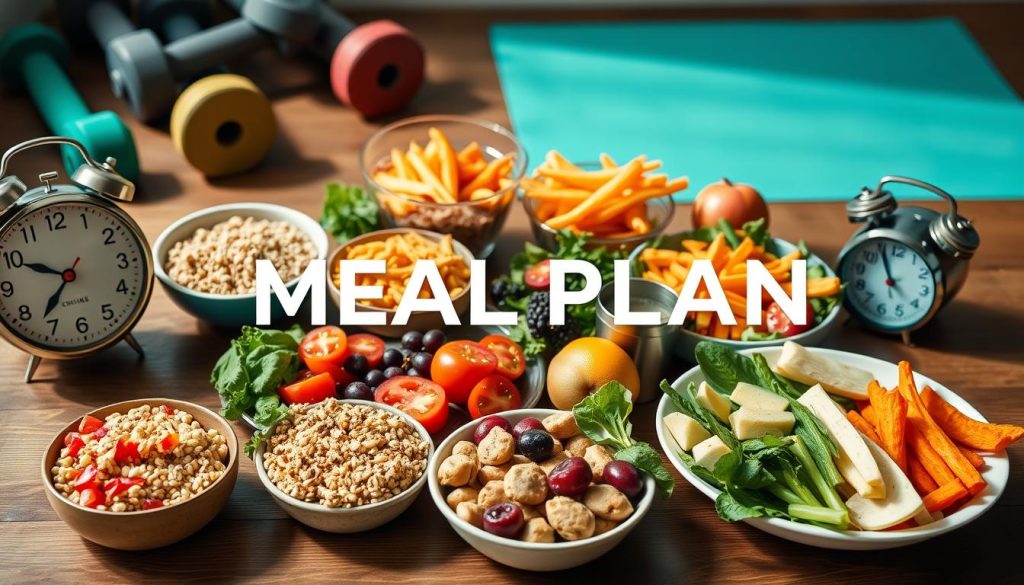
| Meal Timing | Pre-Workout Nutrition | Post-Workout Recovery Meals |
|---|---|---|
| Time Before Workout | 1-3 Hours | Within 30 Minutes |
| Key Nutrients | Carbohydrates, Protein | Protein, Carbohydrates |
| Food Examples | Oats, Greek Yogurt | Grilled Chicken, Protein Smoothie |
Meal Prep Guide for Active Females
Busy women who love fitness and daily tasks can find it hard to eat healthy. A meal prep guide for active females helps make healthy eating easier. It shows how to plan meals for the week, making sure you eat well and meet your fitness goals.
Strategies for Effective Meal Prep
Using the right strategies makes meal prep better. Here are some key tips:
- Plan Your Menu: Make a menu for the week to make shopping and cooking easier.
- Batch Cooking: Cook big batches of meals to save time on busy weekdays.
- Invest in Quality Containers: Good containers keep your meals fresh and easy to grab.
- Use Seasonal Ingredients: Fresh ingredients add flavor and nutrition to your meals.
- Incorporate Variety: Change up your recipes each week to keep meals interesting and avoid boredom.
Creating a Weekly Meal Prep Schedule
Having a weekly meal prep schedule can reduce stress and save kitchen time. Here’s how to make a good schedule:
- Choose a Consistent Day: Pick a specific day each week for meal prep.
- Allocate Time for Shopping: Make sure to set aside time for grocery shopping, ideally on the same day you prep meals.
- Organize Your Cooking: Start with the longest cooking items first, then move to quicker recipes.
- Label and Store: Label your meals clearly so they’re easy to grab and go during the week.
Staying Hydrated
Hydration is key for your health and fitness. Knowing how much water to drink can boost your workout and daily life. When you exercise, drinking enough water is crucial for energy and recovery.
The Role of Water in Your Diet
Water helps with many body functions like keeping you cool and moving your joints. Not drinking enough can make you tired and slow. The amount of water you need changes based on how active you are, where you live, and your health. Here are some tips to help you stay hydrated:
- Drink water before, during, and after workouts to keep your fluids balanced.
- Eat hydrating foods like cucumbers, oranges, and watermelon.
- Always carry a water bottle to drink throughout the day.
Hydration Tips for Active Women
Active women need to drink water all day to perform at their best. Here are some ways to stay hydrated:
- Use your phone to remind you to drink water.
- Add fruit or herbs to your water for a refreshing taste.
- Use a journal or app to track how much water you drink.
Changing how much water you drink based on your activities and where you are can really help. Remember these tips to improve your health and fitness.
| Activity Level | Recommended Daily Water Intake |
|---|---|
| Sedentary | 2.7 liters (91 ounces) |
| Moderately Active | 3.0 liters (101 ounces) |
| Highly Active | 3.5 liters (118 ounces) |
Listening to Your Body’s Needs
Understanding your body’s signals can greatly improve your meal planning. Being aware of your body helps you adjust your diet well. It’s important to know the difference between hunger and cravings to make good food choices.
Adjusting Your Intake Based on Activity Level
Your diet should change with your activity level. On busy workout days, you might need more calories. On rest days, eating less can help keep things balanced. Listen to your body’s energy needs.
Recognizing Hunger versus Cravings
Knowing the difference between hunger and cravings changes how you eat. Hunger is a sign your body needs food. Cravings often come from emotions. Here’s how to tell them apart:
- Wait 20 minutes after feeling hungry to see if it’s still there.
- Keep a food diary to track hunger and cravings.
- Choose healthy snacks like fruits or nuts to satisfy both.
Being more aware of your body helps you make better food choices. This leads to a healthier relationship with food.
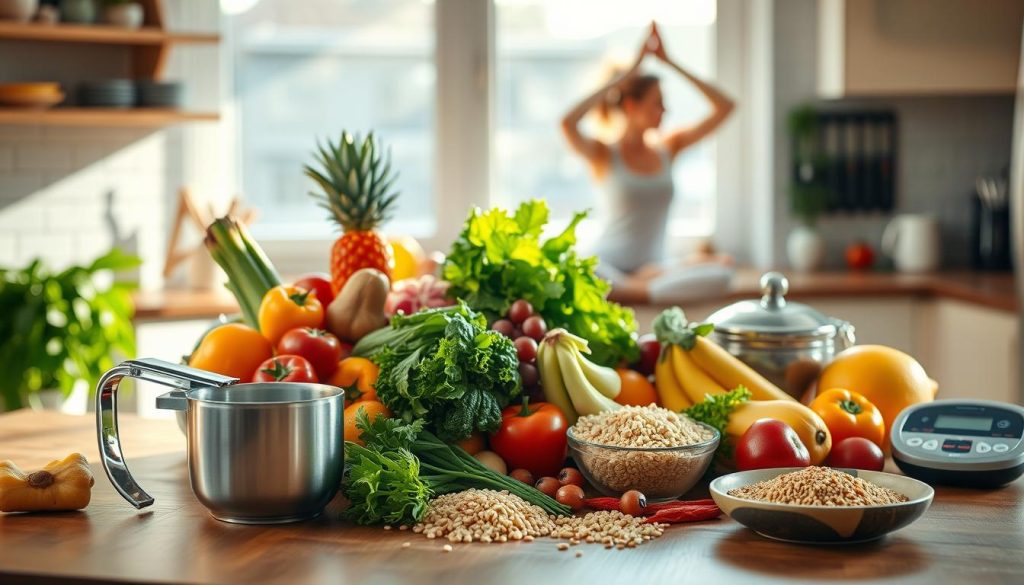
| Body Needs | Activity Level | Nutritional Adjustments |
|---|---|---|
| Resting | Low | Lower caloric intake, focus on maintenance nutrients |
| Light Activity | Moderate | Balanced meals, moderate caloric consumption |
| High Intensity Workouts | High | Increased caloric intake, focus on recovery foods |
Incorporating Variety in Your Meal Plan
Adding variety to your meals can make healthy eating more fun. Eating the same foods all the time can get boring. Trying new flavors and ingredients keeps your meals exciting and ensures you get a wide range of nutrients.
Exploring New Recipes and Ingredients
Exploring different cuisines and trying healthy recipes for women can open up your taste buds. Here are some ideas:
- Quinoa salads with fresh veggies and herbs.
- Chickpea curry with coconut milk for a creamy taste.
- Grilled salmon paired with roasted Brussels sprouts.
These ingredients can make your meals more interesting and satisfying.
Making Healthy Eating Enjoyable
To make your meals more fun, try these tips:
- Make your dishes look good by mixing textures and colors.
- Change up your proteins or grains every week for variety.
- Look for inspiration in meal prep groups or online communities.
By focusing on enjoyable healthy eating, you’ll stick to your diet and reach your fitness goals.
Monitoring Your Progress
Tracking your progress is key in your fitness journey. A food journal helps you understand your eating habits and how they affect your energy and performance. Knowing the food journal benefits lets you make better choices for your nutrition and fitness goals.
Keeping a Food Journal
Keeping a food journal means recording your daily meals, snacks, and drinks. It helps you see what you eat and spot patterns that might impact your workouts. You can check the nutritional value of your meals and learn about portion sizes and calories.
Staying consistent with tracking makes you more accountable. It encourages you to make healthier food choices.
Adjusting Your Meal Plan Based on Results
As you track your progress, you’ll notice changes in your body, energy, and workout performance. This info lets you tweak your meal plan to fit your fitness goals better. Whether you’re trying to lose weight, build muscle, or boost endurance, your food journal is key.
Regular checks help make sure your diet stays on track and supports your goals.
| Aspect | Description |
|---|---|
| Tracking Progress | Maintaining records of your meals, workouts, and results over time. |
| Food Journal Benefits | Helps identify eating habits, control portions, and improve nutritional quality. |
| Adjusting Meal Plans | Modifying nutrition based on measurable results to meet fitness goals. |
Conclusion
A good workout meal plan is key for reaching your fitness goals and living a healthy life. Knowing how your diet affects your performance helps you make better choices. This article has given you the tools to create a meal plan that meets your specific needs.
Start by making the tips fit your lifestyle. It’s important to find a balance in your diet that works for your workouts, tastes, and schedule. Eating a variety of whole foods can make your meals enjoyable and give you the energy you need.
Listening to your body helps you keep a healthy and enjoyable eating routine. By focusing on both your physical health and overall well-being, you’re on the path to lasting success in fitness and health.
FAQ
What should be included in a workout meal plan for women?
A good workout meal plan for women should have the right mix of carbs, proteins, and fats. Eat whole foods like lean meats, whole grains, fruits, and veggies. This ensures you get all the nutrients you need for energy during workouts.
How can I structure my meal plan for better energy during workouts?
Timing your meals is key. Before working out, eat carbs and some protein 30-60 minutes beforehand. After, focus on protein and carbs to help your body recover and repair muscles.
What are some healthy food options for active females?
Active women should eat lean meats, fish, eggs, quinoa, brown rice, and sweet potatoes. Nuts, seeds, and a variety of fruits and veggies are also great. These foods will keep you energized and performing well.
How do I meal prep effectively as an active woman?
Begin by planning your meals for the week and making a grocery list. Set aside time to cook and portion out meals. Use containers that are easy to grab to help you stay on track.
What are the typical calorie requirements for women’s nutrition for exercise?
Caloric needs depend on age, weight, and activity level. Active women usually need 1,800 to 2,400 calories a day. Adjust your intake based on your fitness goals to meet your nutritional needs.
How can I make healthy eating enjoyable?
Adding variety to your meals makes healthy eating fun. Try new recipes and ingredients. Cooking with friends or trying different cooking methods can also make it exciting.
Should I eat differently on days I don’t work out?
Yes, eat fewer calories on rest days but still focus on balanced nutrition. Listen to your body’s needs, as you may still need enough nutrients for recovery and energy for future workouts.
What are some effective tips for hydration for fitness?
Drinking enough water is crucial for performance. Aim for 8-10 glasses a day, more on workout days. Eat hydrating foods like fruits and veggies. Set reminders to drink water regularly.


